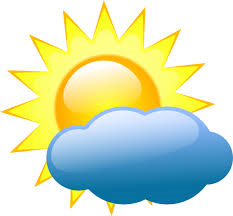Posted by kavery508 | Posted in Uncategorized | Posted on February 6, 2017
 Valentine’s Day is coming! We will exchange valentines in class on Tuesday, 2/14. If your child will be bringing valentines in for classmates, please be sure there is one for everyone. There are currently 22 students in our class. Refer to our updated class list sent home today if your child wishes to personalize valentines with names. Of course, hand-made ones are welcome as well as store-bought! Please be sure no food (including candy) is attached per our district policy, and thanks!
Valentine’s Day is coming! We will exchange valentines in class on Tuesday, 2/14. If your child will be bringing valentines in for classmates, please be sure there is one for everyone. There are currently 22 students in our class. Refer to our updated class list sent home today if your child wishes to personalize valentines with names. Of course, hand-made ones are welcome as well as store-bought! Please be sure no food (including candy) is attached per our district policy, and thanks!
 Thank you for helping keep our room stocked with health supplies. We’ve been able to stave off the germs to prevent class-wide outbreaks! At this time we are in need of antibacterial wipes. Please send in a tub when you can.
Thank you for helping keep our room stocked with health supplies. We’ve been able to stave off the germs to prevent class-wide outbreaks! At this time we are in need of antibacterial wipes. Please send in a tub when you can.
 Our reading comprehension spotlight this week is Understanding Cause and Effect. This is an essential skill for students to own. It helps them analyze storylines and character choices, and so develop a deeper understanding of what is read. As an example, we are reading together Charlie and the Chocolate Factory (Dahl). Mr. Wonka shut down his factory then opened it to a lucky few. What events led to his actions, and how did they affect the town in which Charlie lives? How do the choices made by Charlie and the other children affect the outcome of the narrative? For more on Cause and Effect and using it at home, check out Reading Rockets: http://www.readingrockets.org/article/cause-and-effect
Our reading comprehension spotlight this week is Understanding Cause and Effect. This is an essential skill for students to own. It helps them analyze storylines and character choices, and so develop a deeper understanding of what is read. As an example, we are reading together Charlie and the Chocolate Factory (Dahl). Mr. Wonka shut down his factory then opened it to a lucky few. What events led to his actions, and how did they affect the town in which Charlie lives? How do the choices made by Charlie and the other children affect the outcome of the narrative? For more on Cause and Effect and using it at home, check out Reading Rockets: http://www.readingrockets.org/article/cause-and-effect
 Our study of Opinion writing has wrapped up for Term 2. Here are some great examples from 1) Naomi, on why Emma shows the character trait “determined”; 2) Martin, and 3) Alana, on why dogs make the best pets; and 4) Prisha, on why animals should be allowed to be put in zoos: 1) First, Emma never gives up. When Emma struggles at something and is getting frustrated, she tries harder and gets it. 2) In addition, dogs like to lick you. When a god notices you’re sad, it will come over and lick you. 3) Last, you can do tricks with them. Some tricks are giving the paw, playing dead, and rolling over and sitting. 4) Last, when animals get hurt, they should have someone to come and rescue them. If there weren’t zoos, no one would come. Super! We will end the term with a deep dive into Informative Writing.
Our study of Opinion writing has wrapped up for Term 2. Here are some great examples from 1) Naomi, on why Emma shows the character trait “determined”; 2) Martin, and 3) Alana, on why dogs make the best pets; and 4) Prisha, on why animals should be allowed to be put in zoos: 1) First, Emma never gives up. When Emma struggles at something and is getting frustrated, she tries harder and gets it. 2) In addition, dogs like to lick you. When a god notices you’re sad, it will come over and lick you. 3) Last, you can do tricks with them. Some tricks are giving the paw, playing dead, and rolling over and sitting. 4) Last, when animals get hurt, they should have someone to come and rescue them. If there weren’t zoos, no one would come. Super! We will end the term with a deep dive into Informative Writing.
 This week’s math focuses on relating difference to subtraction, and learning mental math strategies to subtract. Since subtraction is the inverse operation of addition, we make a connection to last week’s strategies. To find the difference when only the ones place changes, we simply subtract and don’t mess with the tens and hundreds: 267 -5 is the same as 7 -5–just remember to put back the 260. To subtract in your head when only the tens place changes, just count back by tens: 267 – 50 should sound like 257, 247, 237, 227, 217. And the same applies when only the 100s place changes: 267 – 100 = 167.
This week’s math focuses on relating difference to subtraction, and learning mental math strategies to subtract. Since subtraction is the inverse operation of addition, we make a connection to last week’s strategies. To find the difference when only the ones place changes, we simply subtract and don’t mess with the tens and hundreds: 267 -5 is the same as 7 -5–just remember to put back the 260. To subtract in your head when only the tens place changes, just count back by tens: 267 – 50 should sound like 257, 247, 237, 227, 217. And the same applies when only the 100s place changes: 267 – 100 = 167.
To quickly subtract 7, 8, or 9 in our heads, we can subtract 10 instead and count up 3, 2, or 1. For example: 432 – 7 is the same as 432 – 10 (422) + 3 (425) since -10 +3 = 7. And 432 – 8 is the same as 432 – 10 (422) + 2 (424), and 432 – 9 is the same as 432 – 10 + 1. These tricks can really work, and show a real fluency with numbers. It is important, therefore, that students try them out repeatedly if they are ever to own them or use them when it suits them to do so.
 In Social Studies, students are learning to identify natural features (landforms) and cultural features (borders, cities, man-made things) on maps. These two things combine to help us quickly find places and learn information. Students will then make atlases by creating their own maps of the 7 continents by: 1. searching for maps of their own using iPads 2. Drawing, coloring, and labeling features of each continent 3. Comparing their maps to their classmates’ 4. Refining their thinking/drawing to improve their information and presentation.
In Social Studies, students are learning to identify natural features (landforms) and cultural features (borders, cities, man-made things) on maps. These two things combine to help us quickly find places and learn information. Students will then make atlases by creating their own maps of the 7 continents by: 1. searching for maps of their own using iPads 2. Drawing, coloring, and labeling features of each continent 3. Comparing their maps to their classmates’ 4. Refining their thinking/drawing to improve their information and presentation.
 Our weather study continues with a look at what air pressure is and how we can use it to predict weather locally and nationally. I’ve been using surface maps and temperature maps daily with the kids from The Weather Channel at weather.com. To help them make meaning, we are doing investigations with pressure that teach us 1) how air can be compressed, and 2) how pressure can be used to manipulate a system–cool!
Our weather study continues with a look at what air pressure is and how we can use it to predict weather locally and nationally. I’ve been using surface maps and temperature maps daily with the kids from The Weather Channel at weather.com. To help them make meaning, we are doing investigations with pressure that teach us 1) how air can be compressed, and 2) how pressure can be used to manipulate a system–cool!

